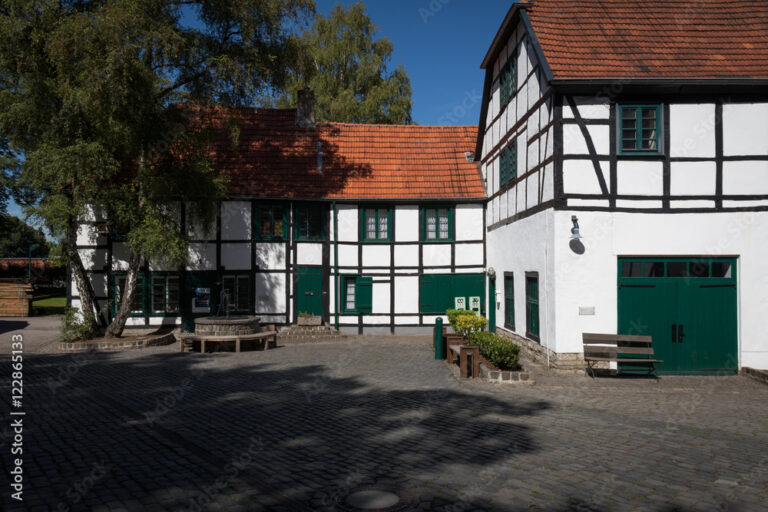Introduction
Table Of Contents
- 0.1 Introduction
- 0.2 Overview of fabrikanlage
- 0.3 Key Components
- 0.4 Designing fabrikanlage
- 0.5 Benefits of fabrikanlage
- 0.6 Fabrikanlage Planning
- 0.7 Fabrikanlage Optimization
- 0.8 Technological Impact
- 0.9 Sustainability in fabrikanlage
- 0.10 Global Trends
- 0.11 Case Studies
- 0.12 Frequently Asked Questions
- 0.13 How can
- 0.14 reduce costs?
- 0.15 What are the latest trends in fabrikanlage?
- 0.16 How does fabrikanlage impact sustainability?
- 0.17 Is fabrikanlage suitable for small-scale manufacturers?
- 0.18 What are the challenges of incorporating automation?
- 0.19 How is Industry 4.0 transforming
- 0.20 ?
- 1 Conclusion
Manufacturing is the backbone of industrial progress. A fabrikanlage represents a modern and sophisticated approach to manufacturing that encompasses everything from infrastructure and machinery to innovative technology and optimized workflows. As manufacturing evolves with advancements in automation and sustainability, the fabrikanlage stands out as a critical enabler for industries to thrive. This comprehensive article examines the multifaceted aspects of fabrikanlage, offering valuable insights into its design, benefits, challenges, and future trends.
Overview of fabrikanlage
The fabrikanlage concept has undergone significant evolution. Traditional factories that relied heavily on manual labor and rudimentary machines have paved the way for highly automated systems. Current trends reveal a shift toward smart manufacturing, incorporating automation, data analytics, and agile practices. The industry is leaning heavily on efficient, interconnected processes that reduce waste and streamline production. As a result, fabrikanlage serves as a blueprint for modern factories that leverage advanced manufacturing techniques.
Types of fabrikanlage
Automated fabrication: These factories rely primarily on robotic systems, machine learning, and IoT to automate production tasks, ensuring precision and repeatability.
Traditional fabrikanlage: Rooted in earlier manufacturing models, these factories still involve significant manual intervention, making them suitable for specific production lines where automation is less feasible.
Hybrid fabrikanlage: A combination of automated and traditional manufacturing practices, these fabrikanlagen balance the efficiency of robotics with the adaptability of human labor.
Key Components
Machinery: The machinery forms the heart of any fabrication. Whether automated or manually operated, machinery must be reliable, efficient, and versatile.
Infrastructure: Robust infrastructure ensures smooth operations, from power supply to transport networks that aid in the seamless flow of raw materials and finished goods.
Workforce: Skilled labor is essential in designing, operating, and maintaining complex manufacturing systems. Workforce training is crucial in hybrid fabrikanlagen.
Safety and compliance: Compliance with safety regulations protects the workforce and prevents costly downtime due to accidents or regulatory fines.
Designing fabrikanlage
Conceptual planning: Planning begins with market analysis, identifying key customer needs, and aligning factory capabilities accordingly.
Layout optimization: An optimized layout minimizes travel time, reduces bottlenecks, and improves communication between departments.
Workflow management: Proper workflow management ensures that production aligns with demand, reducing waste and improving efficiency.
Benefits of fabrikanlage
Efficiency gains: With streamlined processes and interconnected systems, a fabrikanlage boosts productivity and reduces lead times.
Enhanced product quality: Advanced quality control systems and automation ensure consistent, high-quality output.
Reduced operational costs: Automation and optimized workflows cut down labor and energy costs, providing a strong return on investment.
Challenges in fabrikanlage
High initial investment: Setting up a fabrikanlage requires significant capital investment in machinery and infrastructure.
Technological disruptions: Rapid advancements in technology necessitate constant upgrades and skilled staff training.
Regulatory constraints: Adhering to international and local regulations demands ongoing adjustments in operations and documentation.
Fabrikanlage Planning
Market analysis: Comprehensive market research identifies trends and gaps, helping manufacturers tailor their fabrikanlage for target markets.
Resource allocation: Effective resource allocation ensures a steady supply of raw materials and minimizes production delays.
Production forecasting: Accurate forecasting aligns production with demand, preventing underproduction or costly overproduction.
Fabrikanlage Optimization
Lean manufacturing principles: Lean principles eliminate waste and focus on value-adding activities.
Sustainable practices: Sustainable practices like energy-efficient machinery and waste reduction align with global environmental goals.
Continuous improvement: Regular audits and feedback loops enable Fabrikanlagen to evolve with changing market needs.
Technological Impact
Automation and robotics: Automated machinery enhances precision and reduces labor costs.
IoT integration: IoT provides real-time data for predictive maintenance and improved resource management.
Artificial intelligence: AI-driven systems optimize workflows, detect defects early, and assist in production forecasting.
Sustainability in fabrikanlage
Eco-friendly manufacturing techniques: Fabrikanlagen is increasingly adopting renewable energy sources and low-emission machinery.
Energy efficiency: Upgraded infrastructure reduces energy consumption through smart monitoring systems.
Circular economy: A circular economy emphasizes recycling and reusing materials, ensuring minimal waste.
Global Trends
Industry 4.0: Industry 4.0 integrates automation, data analytics, and connectivity for smart factories.
Global supply chains: Global supply chains necessitate flexible manufacturing that can adapt to fluctuating supply and demand.
Green manufacturing: Green manufacturing minimizes environmental impact while maintaining profitability.
Case Studies
Successful
examples: Companies like Siemens and Toyota showcase the power of
highly automated, efficient production lines.
Lessons learned: Investing in scalable technology and staff training is crucial in staying ahead of technological shifts.
Frequently Asked Questions
How can
reduce costs?
By automating workflows, reducing waste, and optimizing resource use, fabrikanlage significantly cuts down operational costs.
What are the latest trends in fabrikanlage?
Current trends include smart manufacturing, sustainable practices, and the integration of AI and IoT.
How does fabrikanlage impact sustainability?
By incorporating eco-friendly practices and reducing energy consumption,
minimizes environmental impact.
Is fabrikanlage suitable for small-scale manufacturers?
Yes, small-scale manufacturers can benefit from hybrid
models that balance automation with manual labor.
What are the challenges of incorporating automation?
Initial investment and the need for skilled technicians pose challenges, but the long-term gains outweigh these hurdles.
How is Industry 4.0 transforming
?
Industry 4.0 connects machinery and systems, providing data insights that improve productivity and quality.
Conclusion
The fabrikanlage concept promises a bright future for manufacturing, enhancing efficiency, reducing waste, and fostering sustainability. As industries adapt to technological advancements and market changes, fabrikanlagen will continue to evolve, providing the flexibility and resilience needed for the future of manufacturing.
